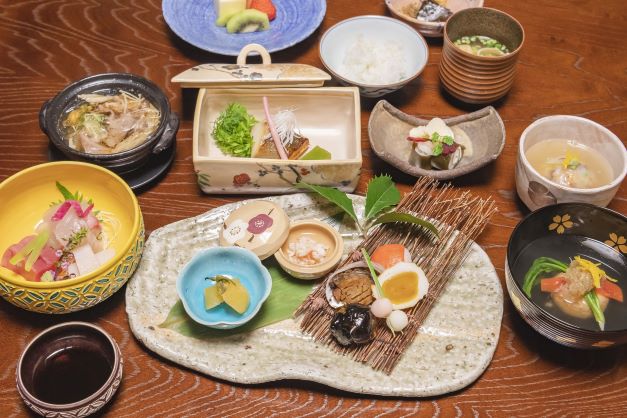
In this case, Kiseki (懐石) means a poor meal enough to survive hunger from the anecdote that a Zen priest held a warm stone in his robe to forget the cold and hunger during his training. It consists of soup, rice and three dishes to prepare your stomach before enjoying the strong tea served at the tea ceremony.
As explained earlier, the basis of Kaiseki Ryori at a tea ceremony is one soup and three dishes, but Japanese restaurants, where you are likely to go to eat in person, often have their own arrangements, such as increasing the number of items or changing the order. In a typical menu, oshiki (折敷), wanmono (椀盛), grilled dishes (焼き物), simmered dishes or vinegared dishes (強肴), suimono (吸い物), hasun (八寸), yuto・kouomono(湯桶・香の物), and omokashi・koicha (主菓子・濃茶) are served.
Originally, Kaiseki Ryori was not a sumptuous meal to be eaten with sake, but rather a dish to fill a small stomach before enjoying a more delicious cup of tea.
[sc_apply url=”https://sushiuniversity.jp/apply/”]
We hope this information will be helpful.

Revision date: December 30, 2022
Share this article